Get PeakVisor App
Sign In
Search by GPS coordinates
- Latitude
- ° ' ''
- Longitude
- ° ' ''
- Units of Length

Yes
Cancel
Share ×

Scan the QR code and open PeakVisor on your phone
❤ Wishlist ×
Choose
Delete
Piedmont is a region located in northwestern Italy. It is the country’s second largest region. Surrounded on three sides by the Alps, the name of the region of Piedmont derives from Latin and it translates as ‘at the foot of the mountains.’ There are 4395 named mountains in Piedmont, the highest and the most prominent of which is Monte Rosa - Dufourspitze (4,633 m/15,200).

Piedmont is a region situated in the northwestern part of Italy. It borders the Italian regions of Liguria, Lombardy, Emilia Romagna, and Aosta Valley. It also borders Switzerland to the northeast and France (Provence-Alpes-Côte d’Azur and Auvergne-Rhône-Alpes) to the west.
The region consists of the provinces of Alessandria, Asti, Biella, Cuneo, Novara, Torino, Verbano-Cusio-Ossola, and Vercelli.
With an area of 25,402 sq. km (9,808 sq. mi), Piedmont is the second largest region in Italy after Sicily. The population of Piedmont is around 4.3 million people, and the capital of the region is Turin.
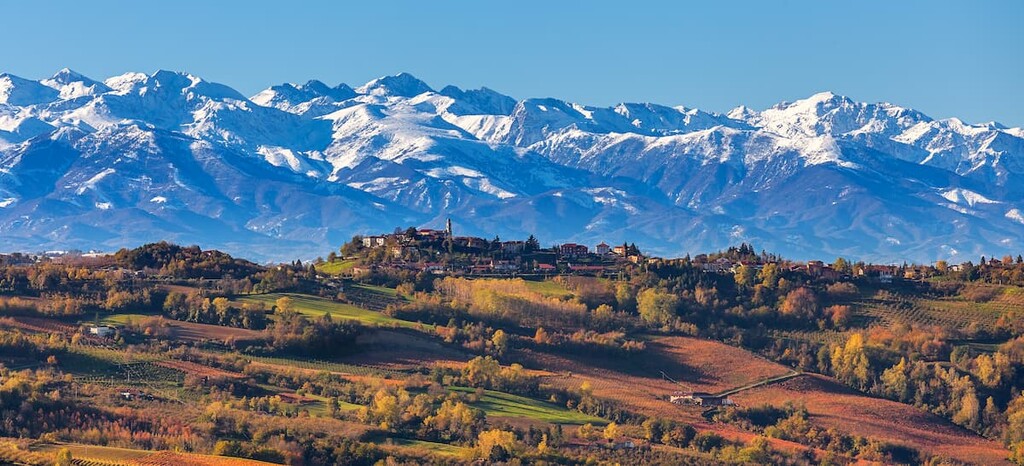
The source of the river Po, Italy’s largest river, is located in Piedmont under the northwest face of Monviso. The region contains the upper part of the Po’s drainage basin, which feeds it with meltwater before it crosses the rest of northern Italy.
Piedmont is home to a diversity of landscapes, from the peaks of Monte Rosa and its surrounding rugged mountainous terrain to the flat rice fields of Vercelli and Novara. The region is composed of four main areas, and approximately 43 percent of the region is mountainous while another 30 percent is dominated by rolling hills, and 26 is home to river plains.
The main geographical features of the region of Piedmont include:
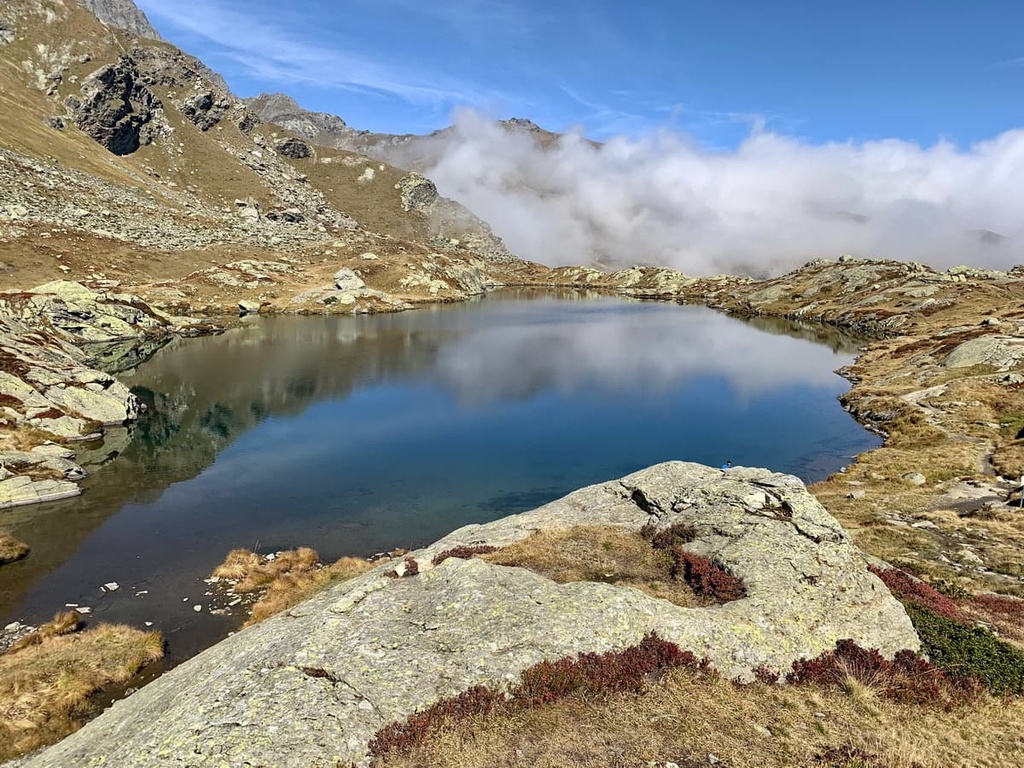
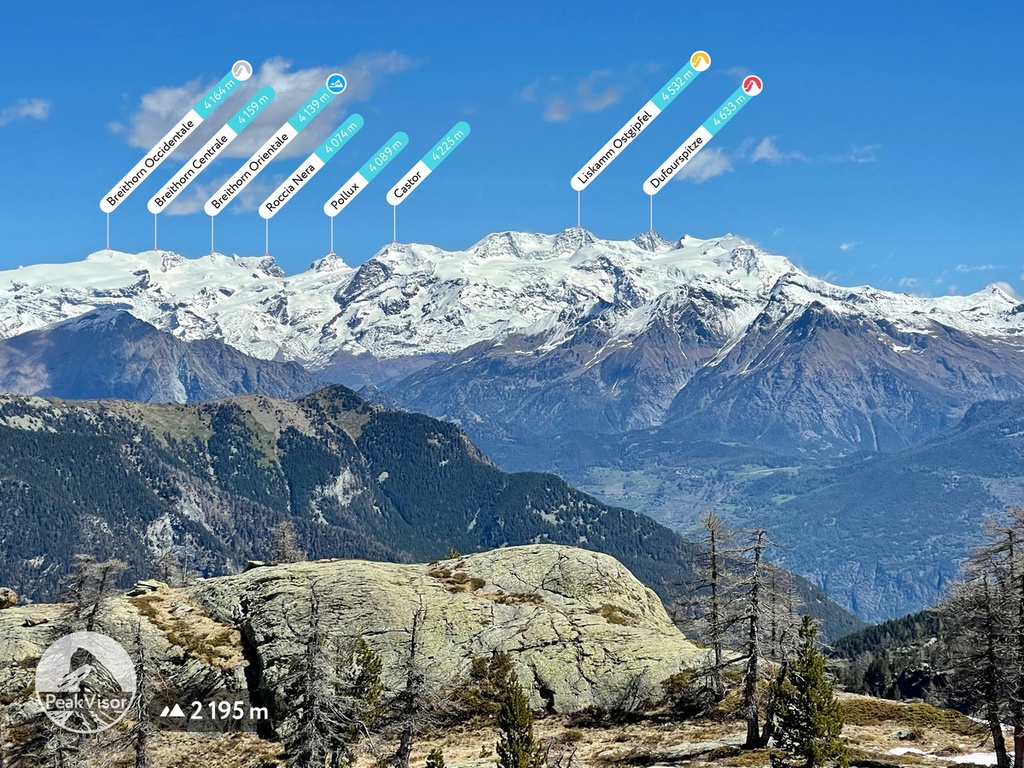
Over 7 percent of the entire region of Piedmont is part of a protected area. There are 56 different parks in the region, the largest of which are Gran Paradiso National Park and Val Grande National Park.
Gran Paradiso National Park was the first National Park to be established in Italy when it was created in 1922. The park is located in the region of Piedmont and Aosta Valley, and it covers 703 sq. km (271 sq. mi) of terrain.
The park was initially established as a royal hunting reserve. It was then handed over to the Italian state in 1920 where it became a protected area to prevent the extinction of the Alpine ibex and other Alpine flora and fauna. The park is vast and is currently home to 120 mountains, 183 lakes, and 59 glaciers.
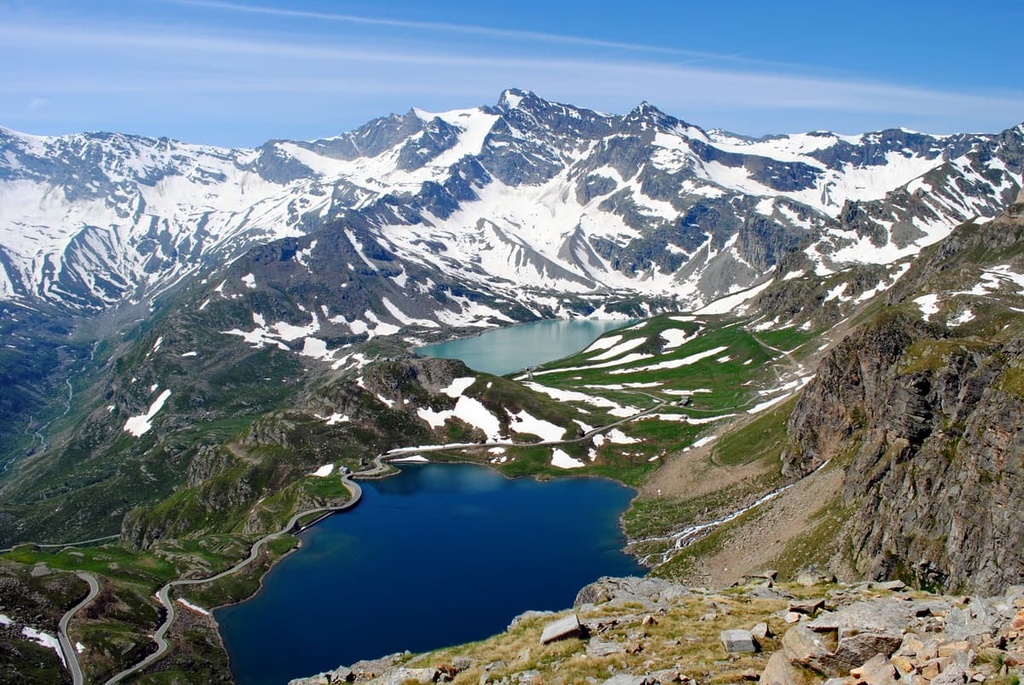
Val Grande National Park is known as the largest wilderness area in Italy. The park encompasses an area of 150 sq. km (58 sq. mi) in the province of Verbano-Cusio-Ossola in Piedmont, close to the Swiss border.
The park is based in the Ticino Alps (Tessiner Alpen), which are part of the larger Lepontine Alps. The park is part of the high Alps and is known for its wilderness due to a lack of any significant settlements in the area.
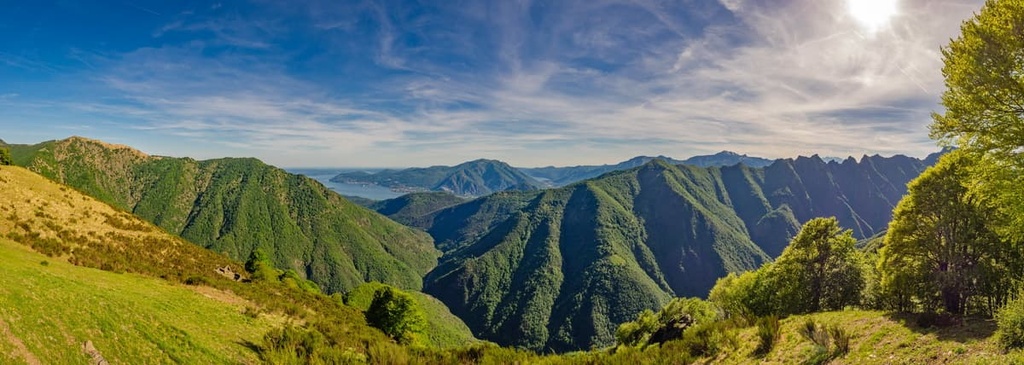
Alongside its two national parks, Piedmont is also home to 22 regional parks and 7 local parks as well as a vast number of nature reserves, Natura 2000 sites, and other protected areas.
Piedmont is home to part of several ranges in the Alps: the Maritime, Cottian, Graian, Pennine, and Lepontine Alps.
This part of the Alps, along with the rest of the Alpine chain, formed between 252 million and 66 million years ago during the Alpine orogeny. However, the region is made up of rocks of many different ages and origins.
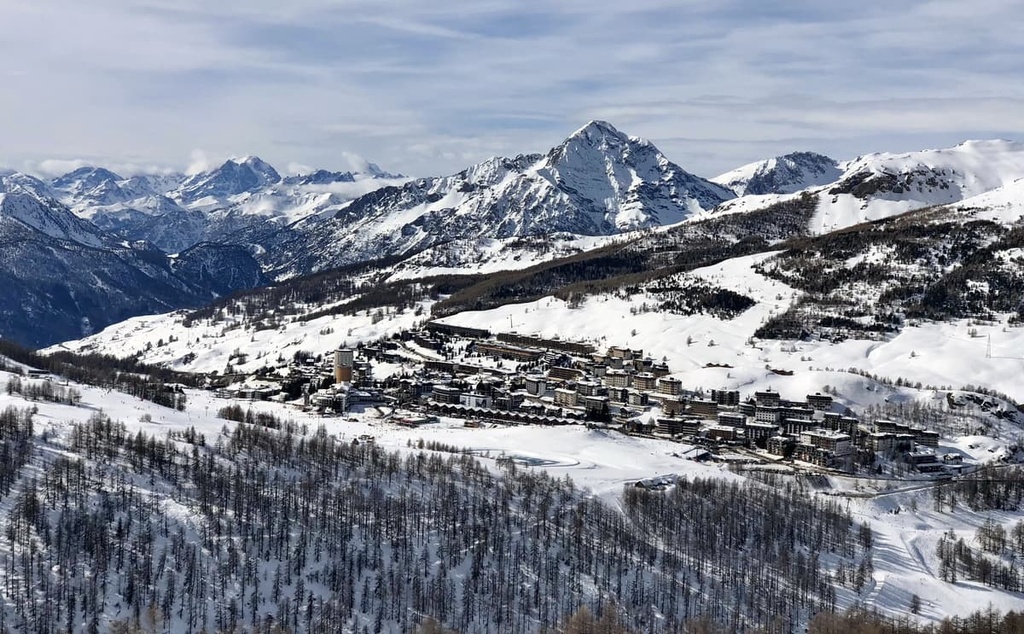
The area that now covers Piedmont would have, at some point, been completely flooded by an ancient sea. During this time, the area that would later become Piedmont was slowly filled with sediments that were deposited by rivers and streams.
In fact, evidence of prehistoric aquatic mammals was found in the hills of Piedmont from a time when this area was under the sea. These finds are now kept in a paleontological museum in Asti.
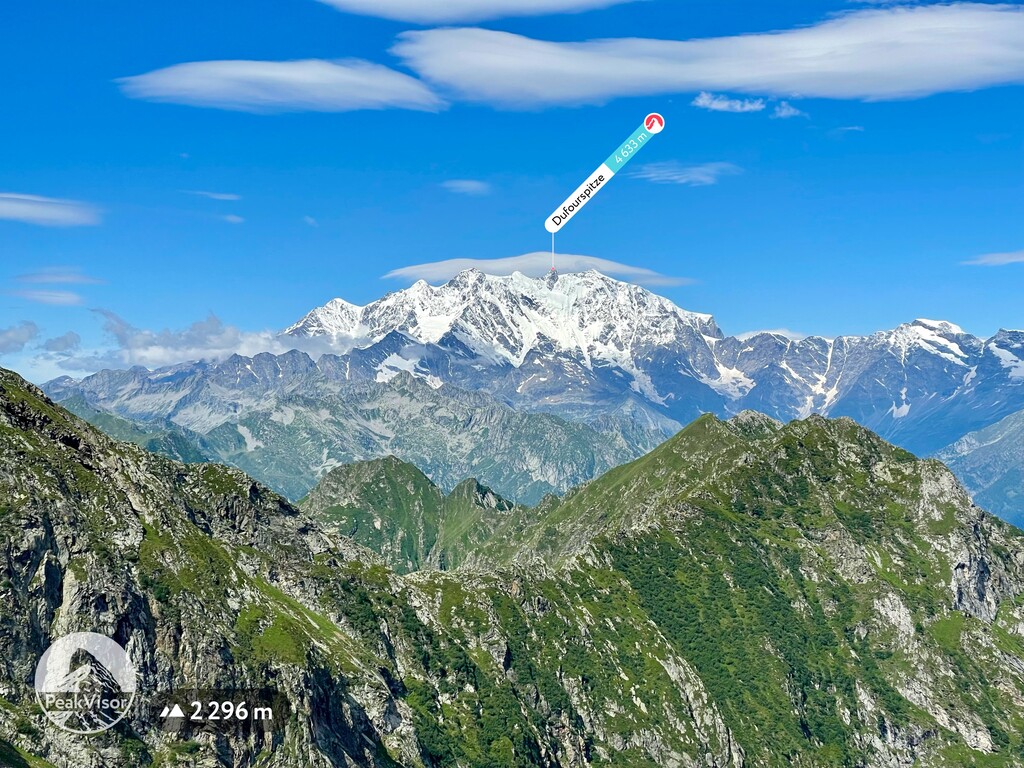
That said, there is a sharp transition between the Alps and the plains; Piedmont doesn’t have the smoother transition of Prealps seen in other regions.
In northeastern Piedmont, areas like Verbano-Cusio-Ossola, Biella, Novara, and Vercelli are all part of the Sesia Val Grande UNESCO Global Geopark, which also encompasses the Val Grande National Park. There are also two regional parks (Alta Valsesia and Monte Fenera), as well as three nature reserves (S. Monte of Varallo, Sanctuary of Ghiffa, and Domodossola).
The Sesia Val Grande UNESCO Global Geopark is an area of geological importance and is the world’s most accessible reference section of the Earth’s continental crust. The crust consists of a mix of metamorphic rocks from the deepest parts of the Earth’s crust, which are now exposed on the surface due to the collision between the continents of Europe and Africa, which drove the Alpine orogeny.
The main valleys in Piedmont include the Stura Valley, Grana Valley, Maira Valley, and Varaita Valley.
Piedmont’s two largest lakes are Lake Maggiore and Lake Orta. They are of glacial origin, like other notable Italian lakes, such as Lake Como and Lake Garda.
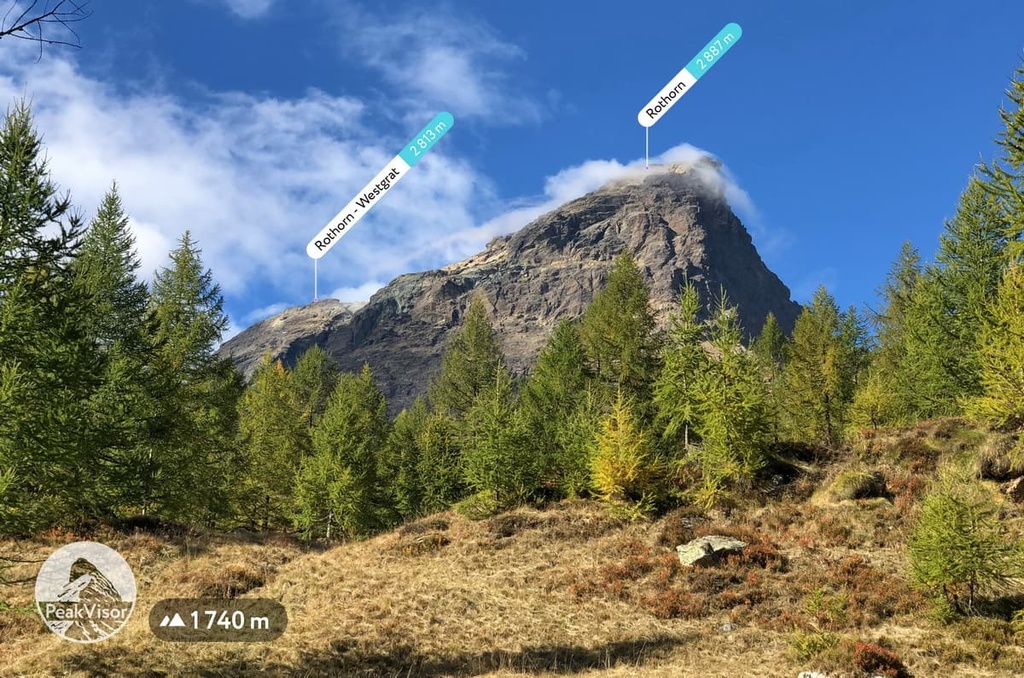
Piedmont is a fairly biodiverse area thanks to its mix of landscapes, from towering peaks and rugged mountains to the plains of the Po valley. The best places to discover the region’s most interesting flora and fauna are in its two national parks.
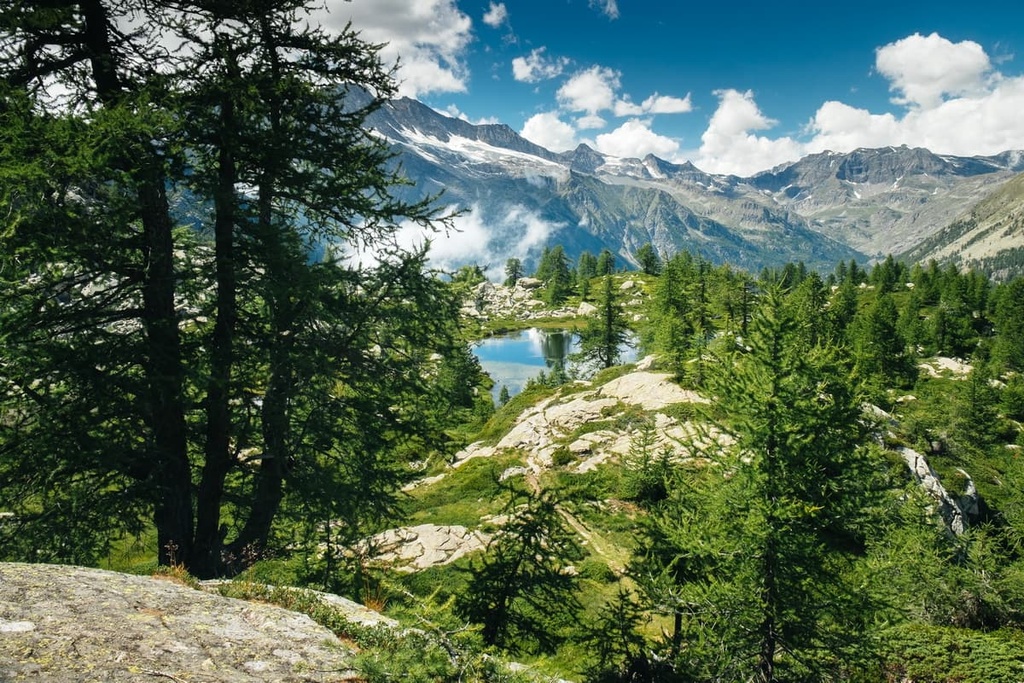
Val Grande National Park is home to rich vegetation due to its proximity to Lake Maggiore.
The lower valley of the park is covered by mixed broad-leaved woodland, particularly chestnut. Beech trees can be found in the upper valley on both the shaded, humid slopes, as well as the sunny southern slopes due to high rainfall in the area.
Here, there are also conifer woods such as spruce and silver fir, with few larches. Species such as maples and alders can be found in the park’s gorges.
At higher elevations, the woodland peters out into shrubs, such as green alder, ferns, and mosses on the north-facing slopes, as well as rhododendron and blueberry on the sunnier slopes and ridges.
As you move higher, the landscape becomes dominated by Alpine meadows and rocky vegetation. The most interesting and rare species found here are the Alpine columbine, mountain arnica, great yellow gentian, and incised bellflower.
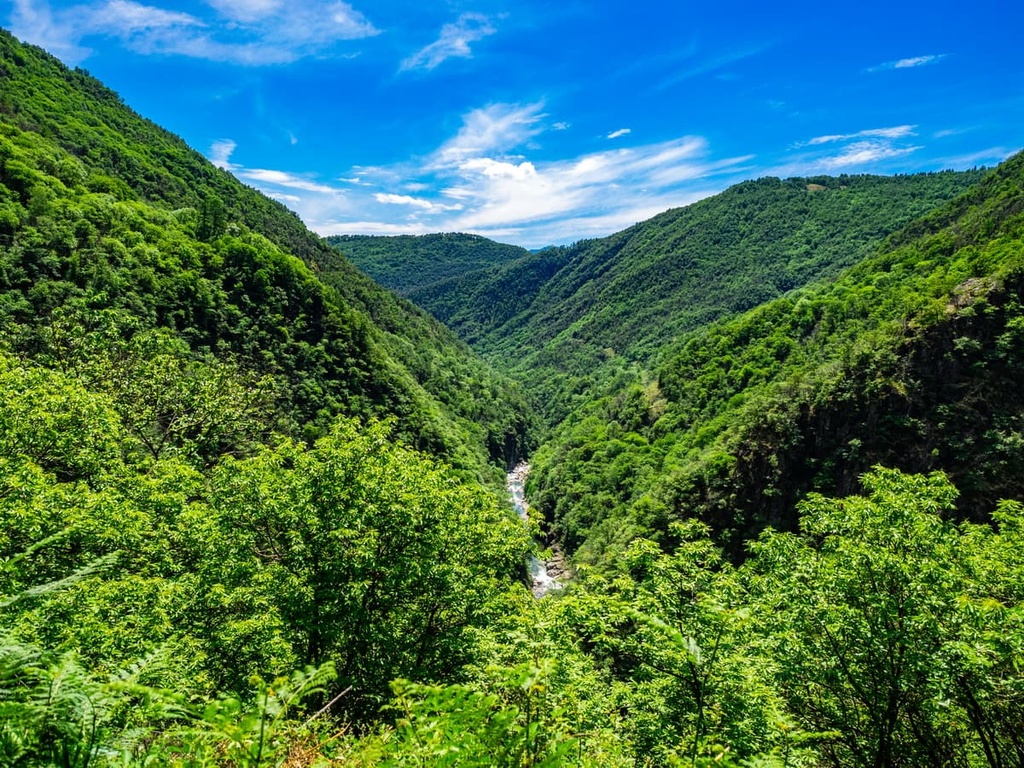
Fauna in the park include chamois, roe deer, foxes, stone martens, weasels, dormice, and brown trout. Bird watchers might spot golden eagles, peregrine falcons, black grouse, eagle owls, woodpeckers, or different passerine species such as white whales and shrikes.
Important species in the park also include insecte like the Carabus lepontinus, which lives exclusively on the slopes of Mount Zeda. Meanwhile, Alpine longhorn beetles, hermit beetles, and variable chafer scarab beetles are included in the lists of species strictly protected at European level.
Gran Paradiso National Park is home to a mostly Alpine environment. The most common tree species found in the lower valleys are larches, spruces, Swiss stone pines, and a small amount of silver firs.
Higher up the slopes, the trees gradually thin out, allowing for Alpine pastures to grow, many of which bloom with flowers in late spring. Higher still, the landscape is characterized by rocks and glaciers.
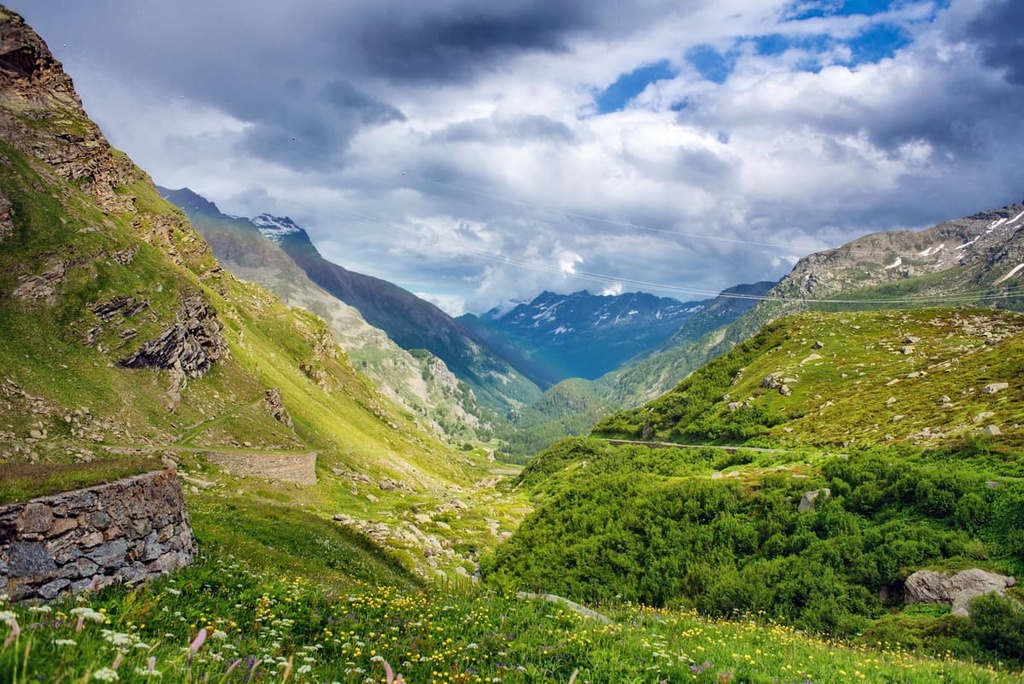
The park’s symbol is the Alpine ibex, so it comes as no surprise that many ibex are found throughout the park. Other mammals to spot in the park include chamois, marmot, mountain hare, foxes, badgers, weasels, and stone martens. Reptiles such as vipers, newts, and salamanders can be found in the park, too, along with insects such as the Parnassius butterfly.
There are plenty of birds of prey to spot in the park, such as the bearded vulture, golden eagle, buzzard, kestrel, sparrowhawk, goshawk, eagle owl, and tawny owl. Other birds found in the park include ptarmigans, black grouse, woodpeckers, robins, and warblers, among others.
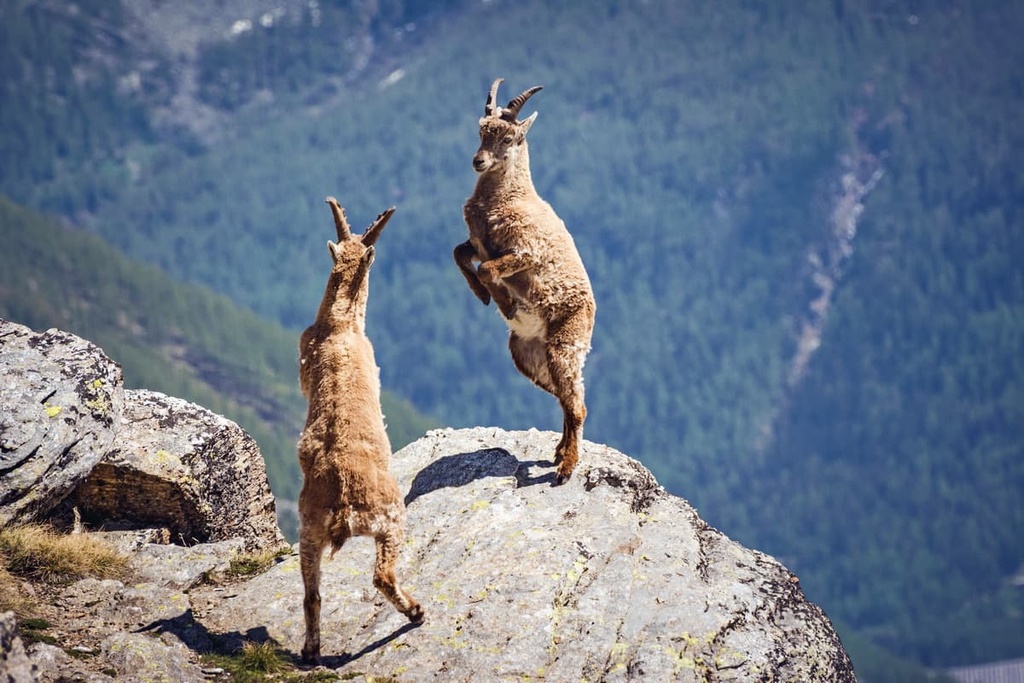
Due to its copious rivers and streams, which flow from the Western Alps into the Po, Tanaro, and the flat plains of the Po valley, Piedmont has many protected wetlands. These wetlands are home to an important array of flora and fauna.
One of the most important wetlands in Piedmont is Parco Naturale del Lago di Candia, which is home to a large number of aquatic bird species along with rare plant species.
Plant species here include white water lilies, yellow water lilies, yellow floating hearts, and water chestnut, among others.
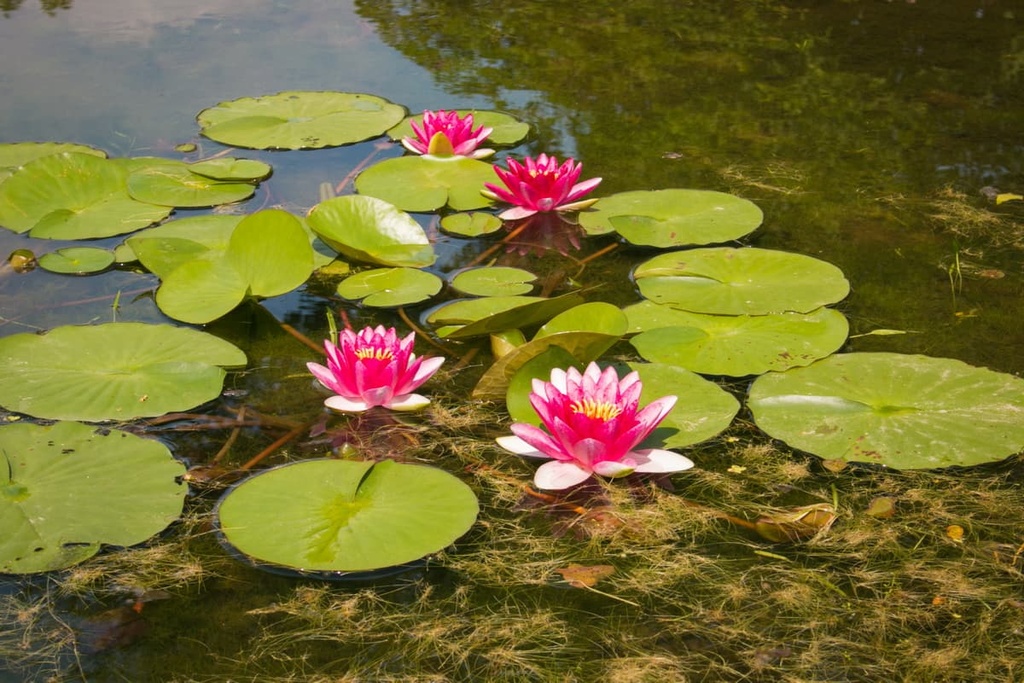
Lake Candia is actually an important resting area for wintering and migrating birds in the area. Aquatic bird species that can be spotted here include great white pelican, white-headed duck, merlin, black-tailed godwit, purple heron, great white egret, bittern, and marsh warbler.
The area that is now called Piedmont was inhabited in early historic times by a number of Celtic-Ligurian tribes. It was later home to the Romans, who founded several colonies.
However, after the fall of the Western Roman Empire, the region that would later become Piedmont was invaded by a number of groups such as the Burgundians, Ostrogoths, Lombards, and Franks. This was followed by invasions by the Magyars, though it eventually became part of the Kingdom of Italy, which was part of the Holy Roman Empire.
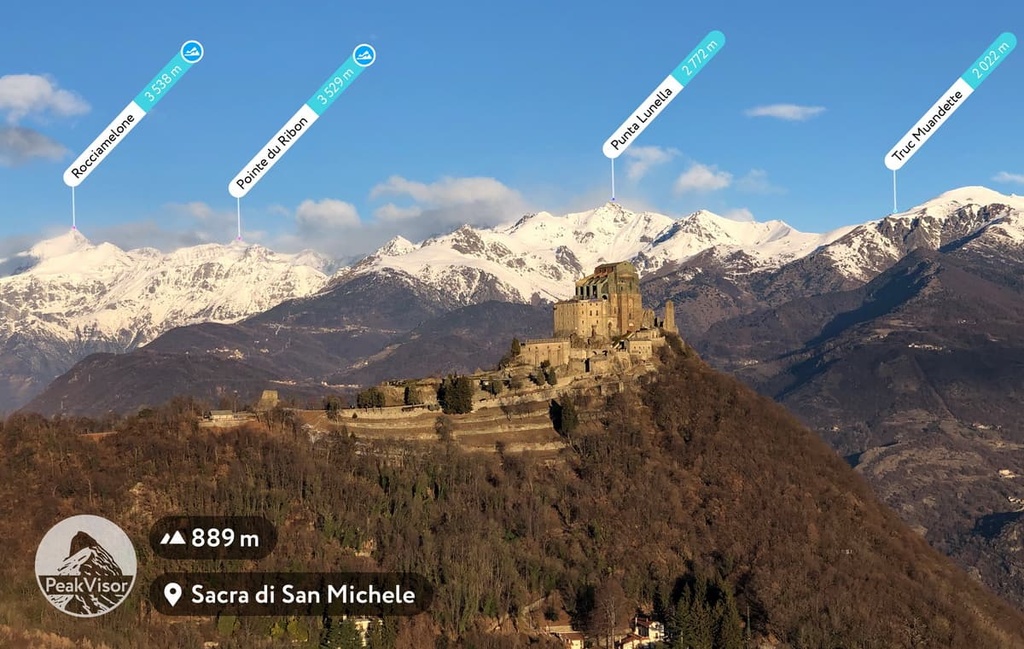
Turin gained importance when it became part of the county of Savoy. It eventually became the Duchy of Savoy and its official seat moved to Turin in 1563. In 1720, the Duke of Savoy became the King of Sardinia and thereby increased Turin’s importance in Europe.
The House of Savoy later became kings of Italy upon unification and Turin became the first capital of Italy, before it moved to Florence, then finally Rome. Once this happened, the importance of both Turin and Piedmont decreased with respect to other major areas, like Rome.
In more recent decades, Piedmont became part of the northern Italian industrial triangle of Turin, Genoa, and Milan. In particular, its automotive industry played an important role in the 1950s and 60s, with Fiat being the best-known Piedmont-based manufacturer. Many of the region’s automobile manufacturers have since become global brands.
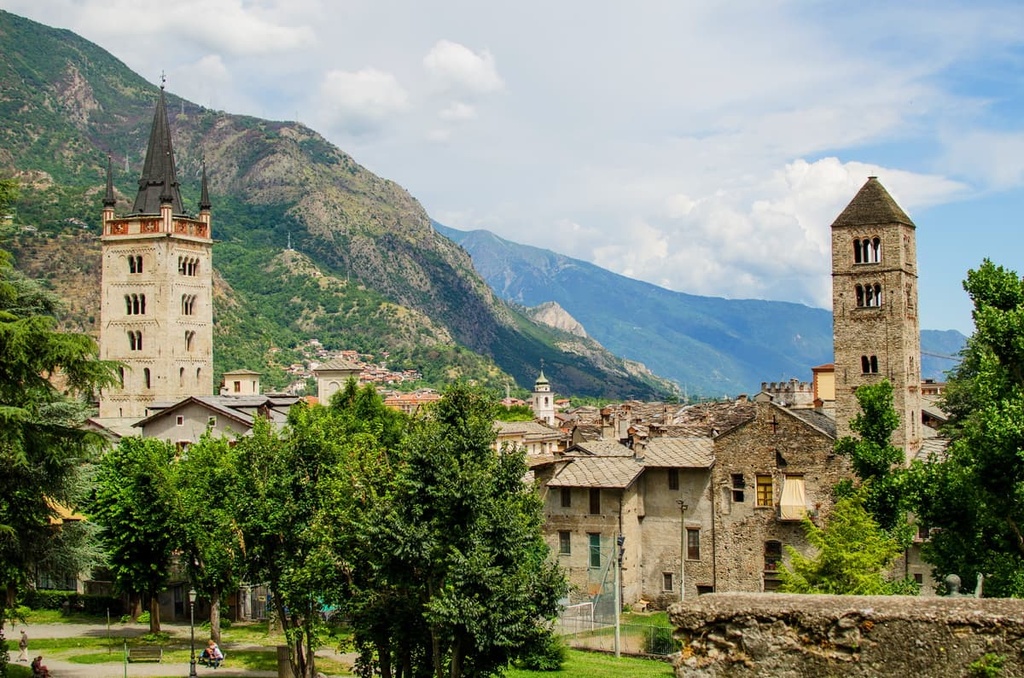
Other important industries in the Piedmont region include electronic and industrial equipment manufacturing, aerospace and defense, wool textile production, jewelry, wine, agriculture, and tourism.
The Alps also play an important role in Piedmont’s power production as the region’s hydroelectric plants supply energy for industrial uses, domestic uses, and transportation. The forests provide lumber and the Alpine meadows offer pasture for cattle as a base for the dairy industry.
The lowlands produce wheat and rice, vegetables and fruit, and milk and cheese. Meanwhile, the hills to the south of the Po River in Piedmont are well-known for the production of some of Italy’s highest quality wines. In fact, the historic vineyard landscape of Langhe, Roero, and Monferrato was designated as a UNESCO World Heritage site in 2014.
Turin also hosted the 2006 Winter Olympics, and is home to two football clubs: Juventus and Torino.
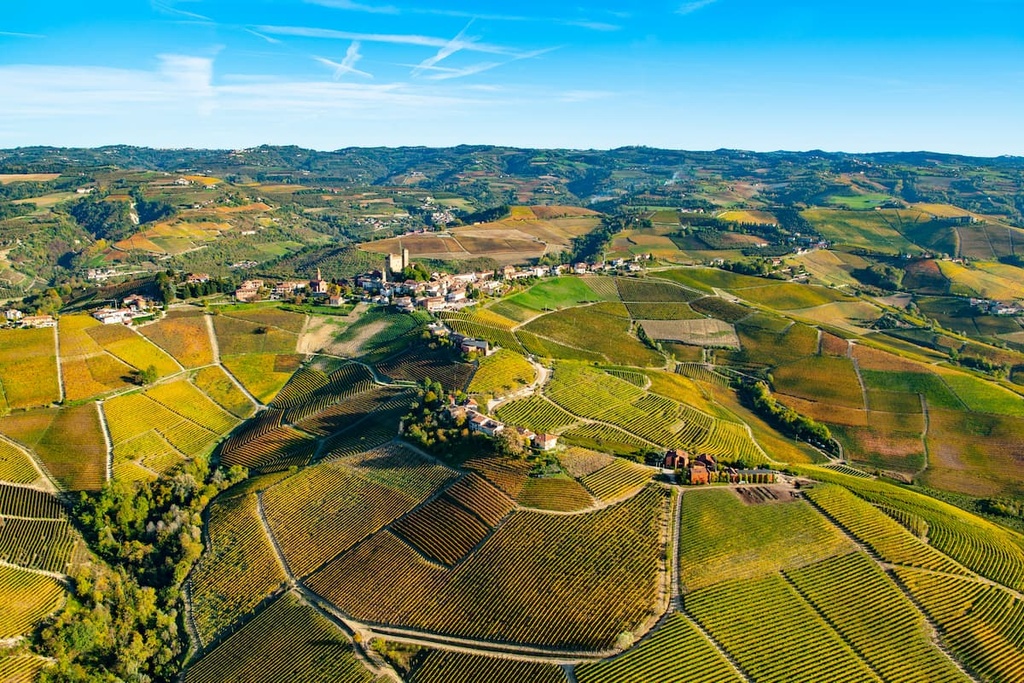
Surrounded on three sides by the Alps, Piedmont is full of hiking opportunities for trekkers of all experience levels. The region also offers mountaineering routes and scenic Alpine trails.
Here are some of the most popular hiking areas in Piedmont to check out during your next trip to the region.
Val Grande National Park is a wild spot and not for the faint hearted. With no towns or villages within its parameters and little to no phone service, hikers are encouraged to plan hikes in advance and bring a map along with them.
The park recommends its official hiking map. Make sure that you come well prepared, inform someone of your itinerary, and call “118” in case of emergencies.

Many trails within the park are unmarked, so if you’re inexperienced or not familiar with the area, then consider hiring a local guide. The park also recommends that hikers only visit between March and November to avoid the heavy snowfall in the winter months.
The Pennine Alps run along the Italian–Swiss border and are home to the Alps’ second highest peak, Monte Rosa.
From the summit, climbers can enjoy views of many iconic peaks that are over 4,000 m (13,123 ft) in elevation, such as the Matterhorn. However, getting to the summit requires mountaineering skills and is not for everyone.
There are plenty of day hikes along the numerous footpaths that surround the peak, as well as longer routes such as The Tour of Monte Rosa. This route takes around 10 days to complete, following old paths that connect Italy and Switzerland through valleys and Alpine hamlets.
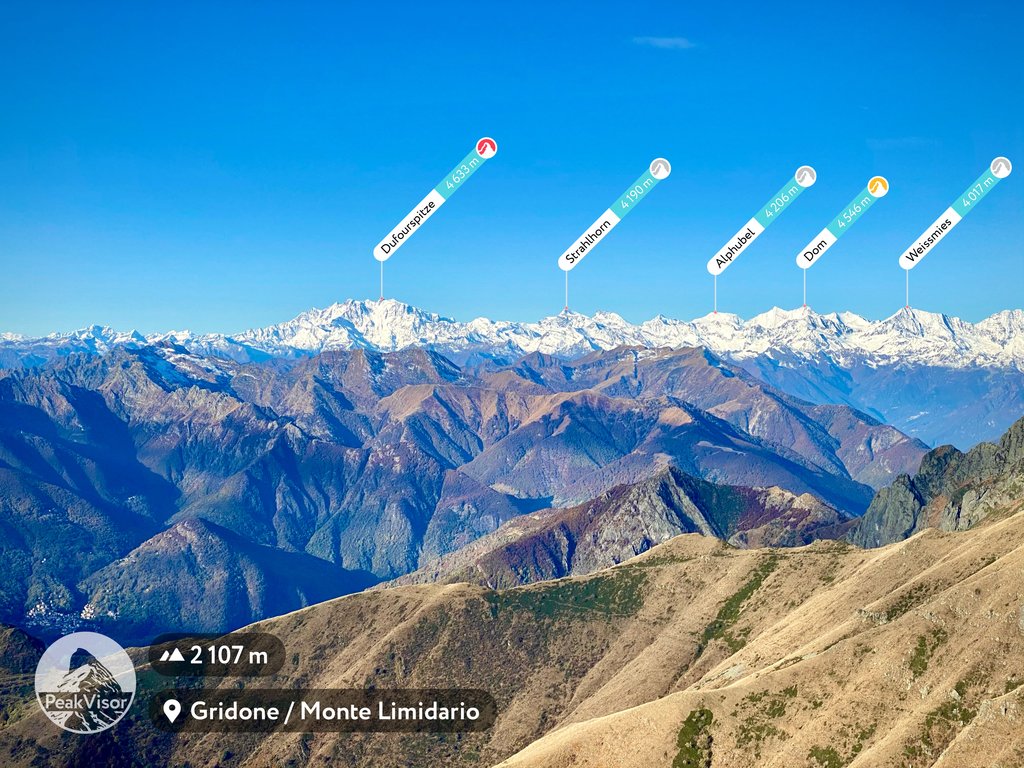
Gran Paradiso National Park is located in the Graian Alps and provides hikers of all levels with a vast network of well-marked footpaths. From old hunting roads to scenic summits, there’s something for everyone to enjoy in the park.
The best time to hike in the Gran Paradiso National Park is from early June to late October, while the winter is reserved for snowshoeing. Although the northern part of the park in Aosta Valley is more popular with visitors, the southern part in Piedmont is much wilder and is ideal if you’re looking for solitude in the mountains.
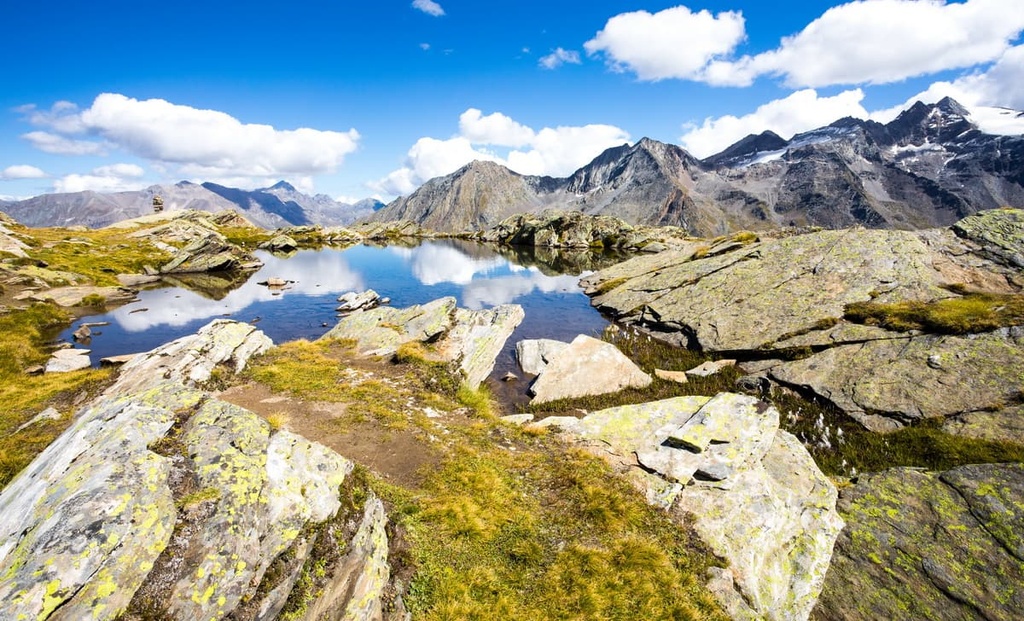
The Cottian Alps are well known amongst outdoor enthusiasts for climbing, hiking, and cycling. In particular, the area around Monviso, the most prominent and recognisable peak of the Cottian Alps, features the most dramatic scenery in the region.
Here you can follow the multi-day Giro del Monviso (Tour of Monviso) route. The route passes numerous Alpine lakes and offers breathtaking views of Monviso, which dominates the skyline.
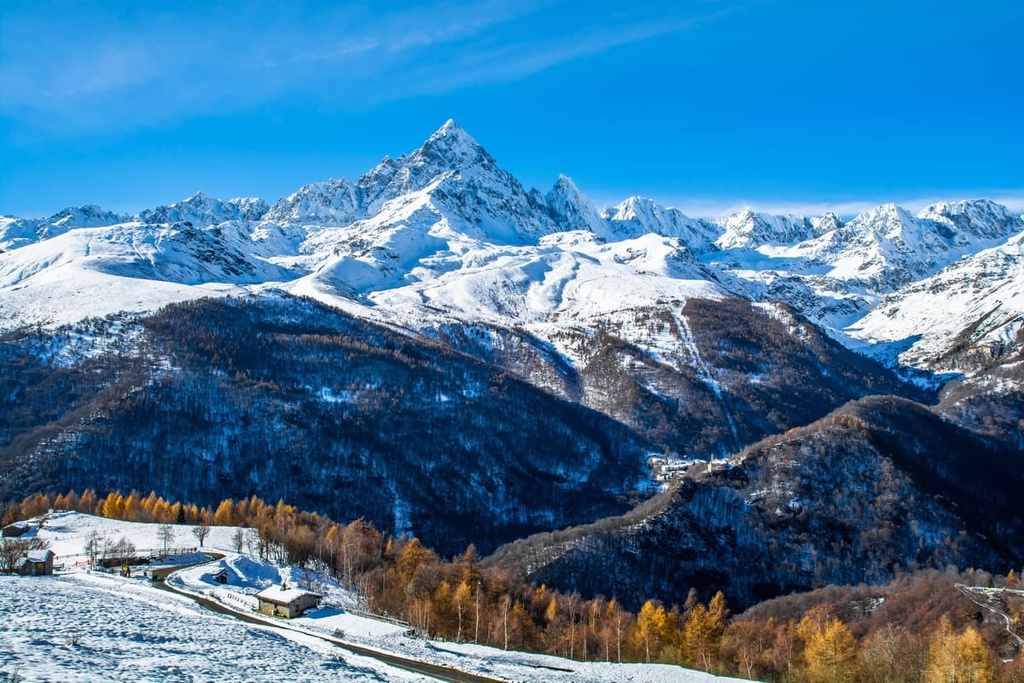
The Maritime Alps Natural Park (Parco Naturale delle Alpi Marittime) is located in the Maritime Alps in the province of Cuneo, just a stone’s throw from the Mediterranean Sea.
The park is home to a vast network of trails that weave through the rugged landscape of the Maritime Alps. Due to the park's proximity to the sea, the area is particularly biodiverse, and it is a great place to spot rare and endemic plant species. The park also has around 6,000 registered animal species, including 55 different types of mammals.
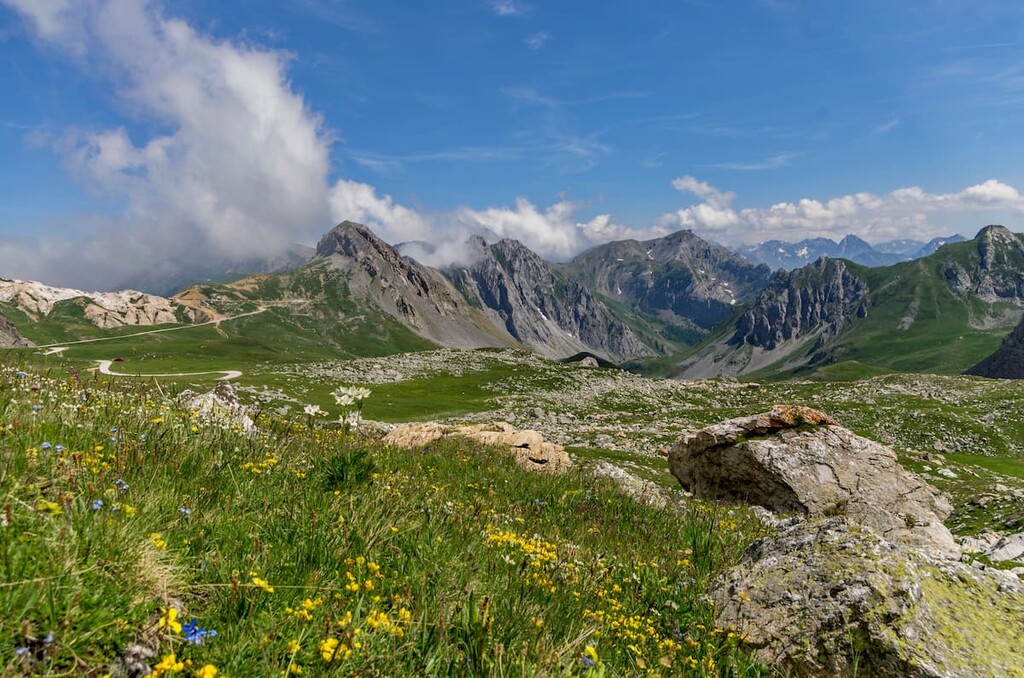
The lakes of Piedmont give access to many beautiful family-friendly hikes. There are plenty of footpaths to be found around both Lake Maggiore and Lake Orta that offer sweeping views across the lakes and the mountains in the distance.
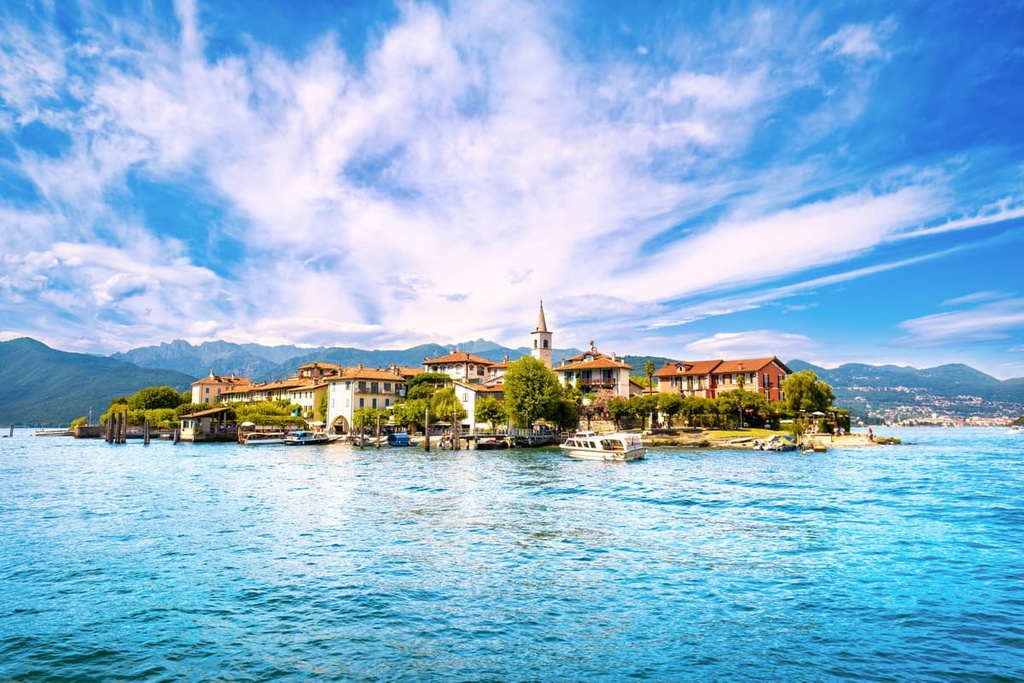
For skiing and snowboarding enthusiasts, there are more than 40 ski resorts in Piedmont. All of them are located along the western border of the region and the country with France and Switzerland in whole or in part. So it is one of the main areas for skiing in the Italian Alps in general.
The largest ski resort in Piedmont is Sestriere with more than 140 km (87 mi) of slopes and more than 40 ski lifts. It is one of five resorts (four Italian and one French) in a 10x larger Via Lattea ("The Milky Way") ski area with more than 400 km (248 mi) of slopes and more than 70 ski lifts. It is also the second largest in all of Italy after the Dolomiti Superski.
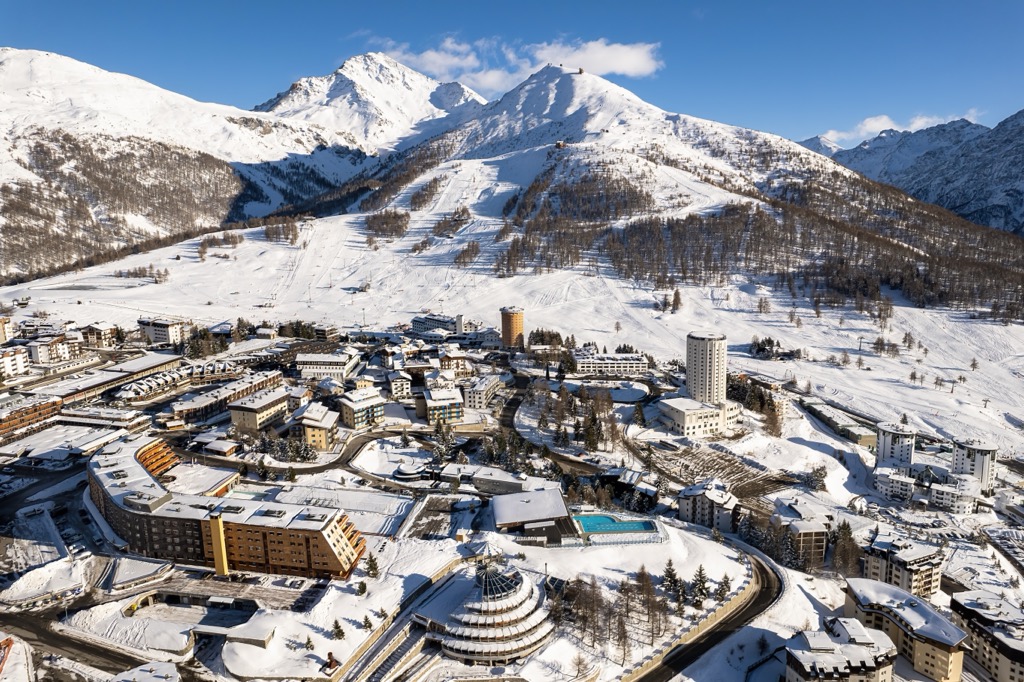
At the same time, Sestriere is the main ski resort near Turin, the capital of the region.
Other major areas for skiing in Piedmont with more than 100 km (62 mi) of slopes and more than 15 ski lifts each include Monterosa Ski, Mondolè Ski (Artesina, Frabosa Soprana, and Prato Nevoso), and Bardonecchia. The latter is just to the north of Sestriere.
Check the Piedmont ski resorts map as well as the larger Italy ski resorts map in the World Mountain Lifts section of the site. It includes information about open ski lifts / slopes in Piedmont in real-time with opening dates and hours. There are also year-round cable cars, funiculars, cog railways, aerial tramways, and all other types of mountain lifts.
While there are plenty of mountain towns, villages, and mountain huts in Piedmont for people who want a true Alpine experience, there are also some bigger cities and towns to base yourself when visiting the region. Here are some of the best places to check out during your next trip.
Turin is the capital of Piedmont and a great place to visit if you also want to reach the nearby mountains. The city was built on the river Po and is surrounded by a skyline of Alpine peaks.
With its elegant boulevards, art-nouveau cafes, and Baroque architecture, Turin feels less like classic Italian cities such as Florence and Rome, and a little more like northern European cities such as Paris and Vienna.
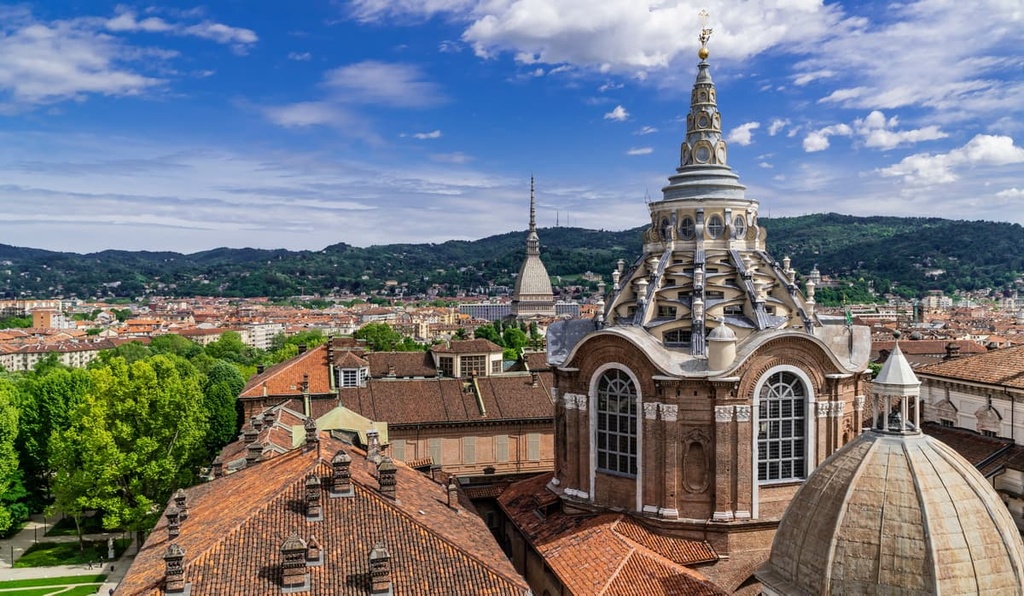
Turin is home to an interesting food and wine culture, as well as contemporary art, architecture, and live music. There are many museums to enjoy, including the second largest Egyptian museum in the world and the National Museum of Cinema, which is based in Turin’s iconic Mole Antonelliana building.
Cuneo is located close to the border with France and is in the southern part of Piedmont.
The city is known for its many historic sites, architectural landmarks, and religious buildings, as well as for its local cheese, chocolate, and internationally renowned wines. Cuneo is also the perfect basecamp for anyone who wants to explore the nearby Ligurian and Maritime Alps.
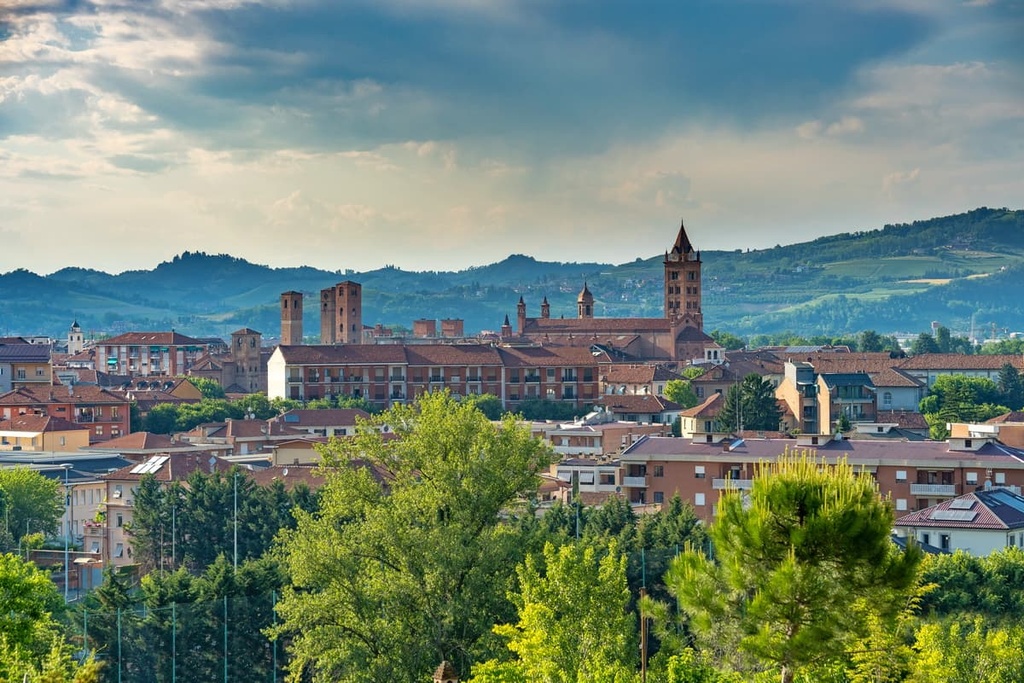
Verbania sits on the northern shore of Lake Maggiore. It is full of history and beautiful architecture, such as the Villa Taranto Botanical Gardens. Verbania is the closest major town to the Val Grande National Park and a great base for visiting the park.
Here you can stroll along the lakeside and take a visit to a beautiful eighteenth-century palace on nearby Isola Bella, one of the Borromean Islands. Some other towns within driving distance from Verbania that are located along Lake Maggiore include Stresa, Baveno, and Arona.
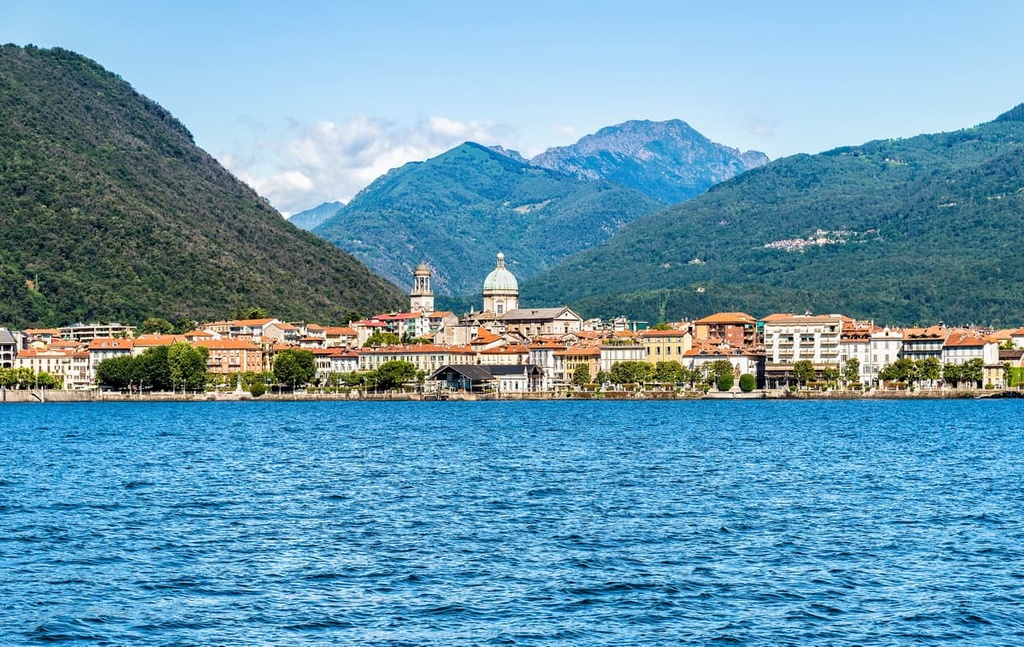
Omegna is located on the north of Lake Orta (Lago d’Orta), close to Lake Maggiore. The picturesque town is set against a backdrop of mountains and forest. When staying in Omegna, take the ferry to visit some of Lake Orta’s other towns, which are dotted along the lakeside.
Here, you can hire canoes to explore the lake. Additionally, there are plenty of walks and mountain biking opportunities in the surrounding hills as well as access to the nearby mountains.
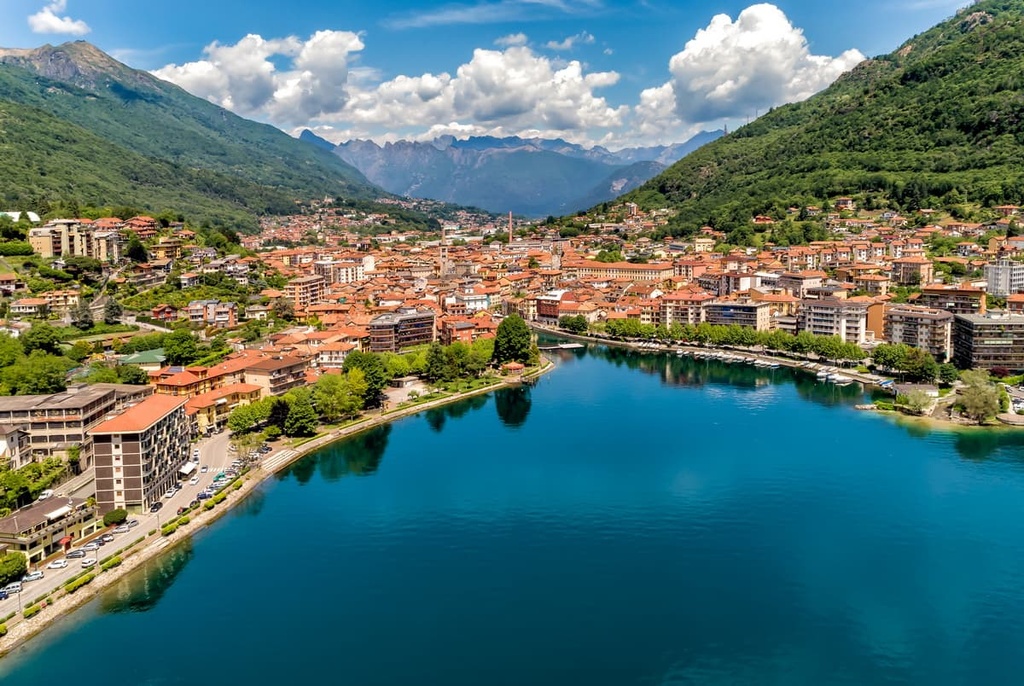
Susa is situated in the heart of the Susa valley at the foot of the Cottian Alps. Although Susa is relatively small, its accessibility to the Cottian Alps and Monviso means that it’s a great base for hiking holidays.
Additionally, Susa is a particularly historic place as it was founded by the Gauls long before it became a part of the Roman Empire in the first century BCE. It is an old alpine town that was once a transportation hub between southern France and northern Italy. Interestingly, Susa still retains its status as a transport hub as it is located along the Turin–Lyon high-speed railway line.
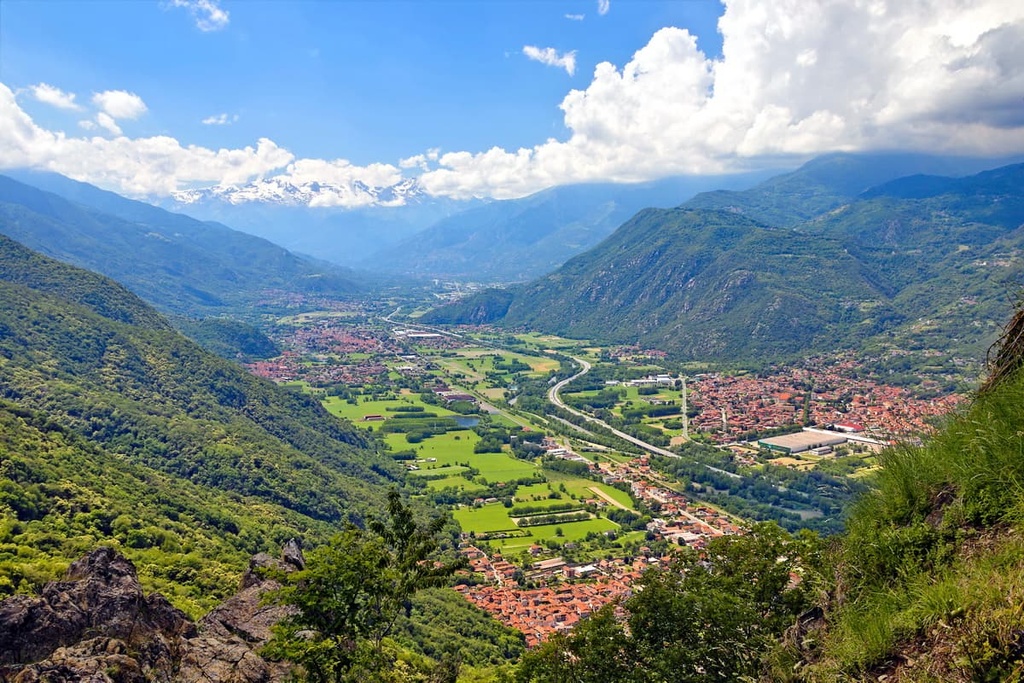
Explore Piedmont with the PeakVisor 3D Map and identify its summits.








top10
ultra
glacier
europe-4500ers
alps-4000ers
italy-ultras
switzerland-ultras
top10
ultra
glacier
europe-4500ers
alps-4000ers
italy-ultras
switzerland-ultras
